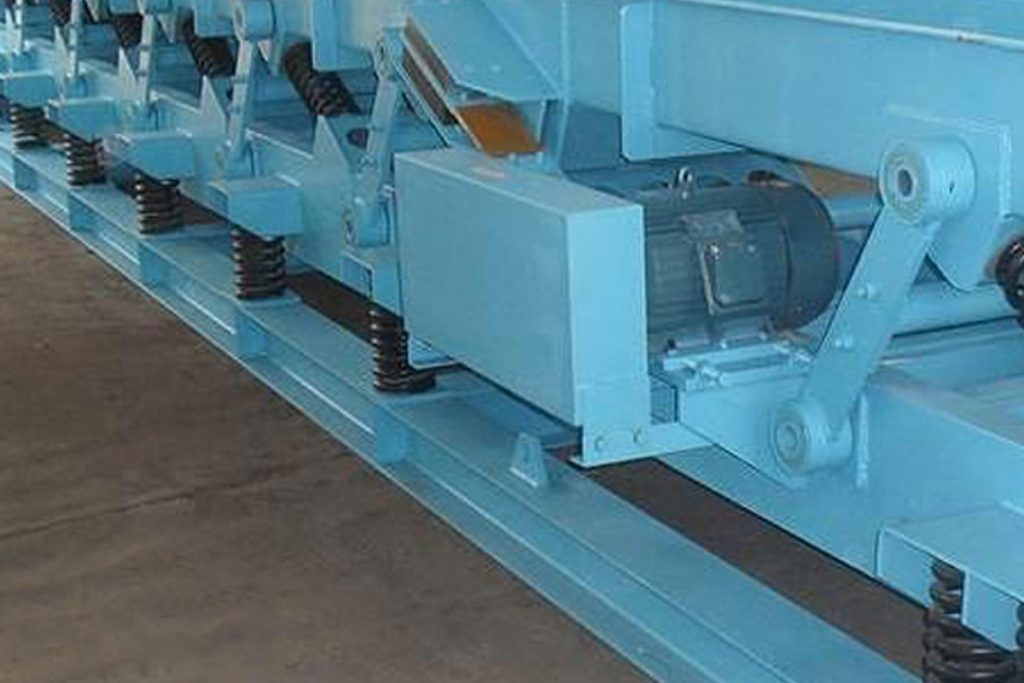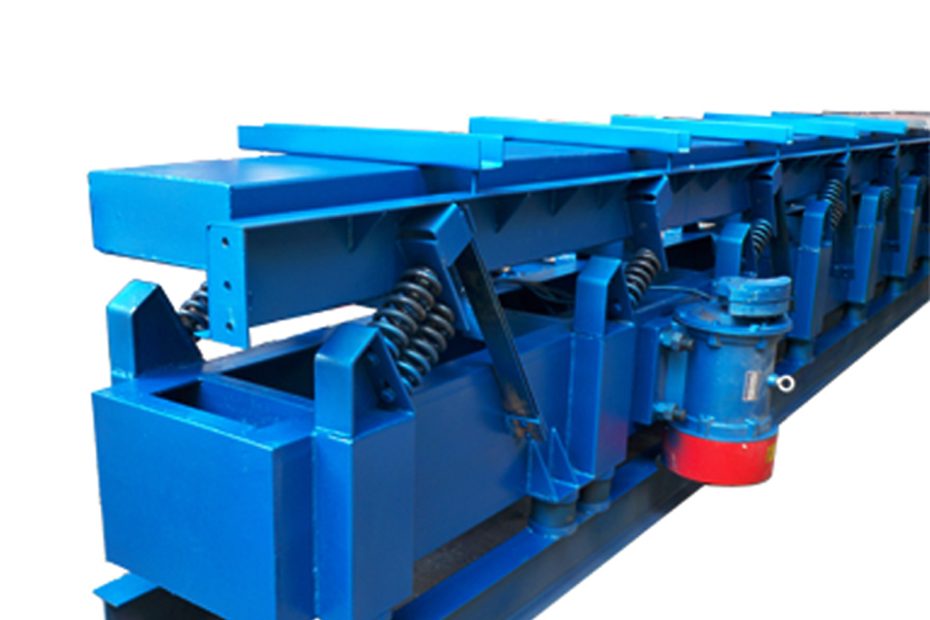The inertial resonance feeder is a feeding equipment with advanced technical indicators. It combines the commonly used inertial vibration technology with the advanced variable frequency speed regulation technology.
The vibration isolation system of the inertial resonance feeder is composed of the machine body (including the trough body and the exciter) and the vibration isolation spring. The working frequency is far away from the natural frequency of the vibration isolation system, and the frequency ratio is usually 4~10. Its main vibration system is a double mass resonance system, and the frequency ratio is usually 0.85~0.95.
After the motor is started, it drives the shaft equipped with the eccentric block to rotate through the transmission belt. The inertial force generated by the rotation of the eccentric block causes the trough body to vibrate under pressure, and the motion trajectory of the trough body is an ellipse. The shear stiffness of the shear rubber spring is much smaller than its compression stiffness.
When designing, the main vibration system is usually close to resonance in the direction of shear deformation of the rubber spring, and far away from resonance in the direction of compression deformation of the rubber spring. As a result, the amplitude in the direction of shear deformation of the rubber spring is much larger than the amplitude in the compression direction, that is, the major axis of the elliptical trajectory is much larger than its minor axis, so the motion trajectory of the trough can be approximately regarded as a straight line.

Five characteristics of inertial resonance feeder
- Simple structure, easy installation, stable operation.
- Large conveying capacity, high conveying efficiency, strong adaptability to materials.
- Low energy consumption, small maintenance, low operating cost.
- Adopting variable frequency speed regulation, the feeding amount is easy to adjust, and it is easier to realize automatic control of the system.
- Explosion-proof exciter can be selected, which is suitable for occasions with explosion-proof requirements.
Conclusion
Since the direction of the exciting force of electromagnetic vibrating feeder, self-synchronous vibrating feeder and inertial resonance feeder is at a certain angle to the bottom plane of the trough, the material moves forward continuously along a parabolic trajectory to achieve the purpose of conveying.
Inertial resonance feeder equipment is widely used in mining, metallurgy, coal, building materials, light industry, chemical industry, electric power, food and other industries. It is used to feed block, granular and powdery materials from storage bins or hoppers to receiving devices evenly, continuously or quantitatively.
